|
Books Should Be Free Loyal Books Free Public Domain Audiobooks & eBook Downloads |
|
|
Books Should Be Free Loyal Books Free Public Domain Audiobooks & eBook Downloads |
|
Fiction |
|---|
|
Book type:
Sort by:
View by:
|
By: Frank Gee Patchin (1861-1925) | |
|---|---|
 Pony Rider Boys in New Mexico
Pony Rider Boys in New Mexico
Yee-Haw!! The Pony Rider Boys are on the move again! This time they are on their way to Bluewater, New Mexico, ready for whatever adventure they can find. But this time, trouble spots them on the train. Will the Pony Rider Boys be able to handle whatever comes their way? | |
 Pony Rider Boys in Alaska
Pony Rider Boys in Alaska
Yee-haw!! The Pony Riders Boys are on the move again! In their last adventure, they are on their way with Professor Zepplin to Alaska. On the "Corsair", they see gold miners on their way to seek their fortune, so the Pony Rider Boys decide to join in the hunt for the yellow metal. But, as always, trouble is not far behind the Pony Rider Boys! (Ann Boulais ) | |
 Pony Rider Boys with the Texas Rangers
Pony Rider Boys with the Texas Rangers
Yee-Haw!! The Pony Rider Boys are on the move again. This time the boys at Delaware Creek, dead in their saddles. They had been riding long and hard into Texas, looking forward to their next adventure. But, trouble finds them once again, this time Stacy Brown may have been shot! What will happen next is anyone's guess. Previous book in the series: The Pony Rider Boys in Grand Canyon Next book in the series: The Pony Rider Boys on the Blue Ridge | |
 Pony Rider Boys in the Grand Canyon
Pony Rider Boys in the Grand Canyon
Yee-Haaww! The Pony Rider Boys are on the move again. The boys are back home, but as they are chopping wood, it is decided that they need a new adventure out west. Mr. Perkin's, Walter's dad, has suggested the Grand Canyon. So, meeting Professor Zepplin on the way, they set out on the train for Arizona. Previous book in the series: The Pony Rider Boys in New Mexico Next book in the series: The Pony Rider Boys with the Texas Rangers | |
 Pony Rider Boys in the Ozarks
Pony Rider Boys in the Ozarks
Yee-Haw!! The Pony Rider Boys are on the move again! This time the boys are in the Ozark Mountains in Missouri. With Joe Hawk, or Eagle-eye, guiding them, Professor Zepplin and the Pony Rider Boys are sure to find many adventures in this action-packed, fourth book of this series by Frank Gee Patchin. | |
By: Frank Gelett Burgess (1886-1951) | |
|---|---|
 Master of Mysteries
Master of Mysteries
Subtitled, "Being an account of the problems solved by Astro, seer of secrets, and his love affair with Valeska Wynne, his assistant." Classic detective stories, with an atypical solver of them. Note, the book itself is published with no author name, which explains the introduction. Don't understand what I mean? Listen and find out! - Summary by TriciaG | |
By: Frank L. Packard (1877-1942) | |
|---|---|
 The Adventures of Jimmie Dale
The Adventures of Jimmie Dale
Frank Lucius Packard (February 2, 1877 – February 17, 1942) was a Canadian novelist born in Montreal, Quebec. He worked as a civil engineer on the Canadian Pacific Railway. He later wrote a series of mystery novels, the most famous of which featured a character called Jimmie Dale. Jimmie Dale is a wealthy playboy by day, with a Harvard education and membership to New York City’s ultra-exclusive private club St. James. But at night he puts on a costume and becomes The Grey Seal, who enters businesses or homes and cracks safes, always leaving a diamond shaped, grey paper “seal” behind to mark his conquest, but never taking anything... | |
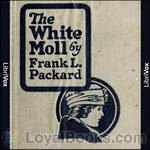 The White Moll
The White Moll
Frank Lucius Packard (February 2, 1877 – February 17, 1942) born in Montreal, Quebec, was a Canadian novelist. Packard is credited with bridging the gap from the “cozy” style mysteries to the more gritty, hard-boiled style of such writers as Dashiell Hammet and Raymond Chandler. Packard also wrote a series of novels, beginning in 1917, featuring Jimmie Dale. A wealthy playboy by day, at night, Jimmie becomes a crimefighter “The Gray Seal” complete with mask and secret hide-out, “The Sanctuary”... | |
By: Frank Linderman (1869-1938) | |
|---|---|
 Indian Why Stories: Sparks from War Eagle's Lodge-Fire
Indian Why Stories: Sparks from War Eagle's Lodge-Fire
Delightful fables, collected by a devotee of Indian lore, recounts many of the legends told to him by tribal members, among them intriguing explanations of "Why the Chipmunk's Back is Striped," "How the Otter Skin Became Great Medicine," "How the Man Found His Mate," and "Why Blackfeet Never Kill Mice." | |
By: Frank Norris (1870-1902) | |
|---|---|
 McTeague
McTeague
McTeague is a simple dentist who becomes infatuated with Trina, the cousin of his friend Marcus. Trina then buys a winning lottery ticket worth $5,000, and McTeague announces his plans to marry her. But their marriage quickly falls apart as greed consumes them both, and Marcus' jealousy toward McTeague boils over. | |
 The Octopus
The Octopus
Frank Norris based his 1901 novel The Octopus (A Story of California) on the Mussel Slough Tragedy of 1880, a bloody conflict between ranchers and agents of the Southern Pacific Railroad. The central issue was over the ownership of the ranches, which the farmers had leased from the railroad nearly ten years earlier with intentions of eventually purchasing the land. Although originally priced at $2.50 to $5 per acre, the railroad eventually opened the land for sale at prices adjusted for land improvements; the railroad’s attempts to take possession of the land led the ranchers to defend themselves as depicted in the book. | |
By: Frank Pinkerton | |
|---|---|
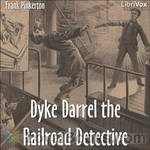 Dyke Darrel the Railroad Detective
Dyke Darrel the Railroad Detective
Dyke Darrel investigates an audacious train robbery that included the murder of a friend, and embarks on a man-hunt. High Victorian serial melodrama at its best! | |
By: Frank R. Stockton (1834-1902) | |
|---|---|
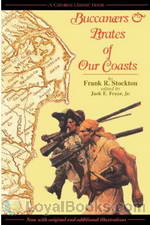 Buccaneers and Pirates of Our Coasts
Buccaneers and Pirates of Our Coasts
Buccaneers and Pirates of our Coasts is a non-fiction, rolicking story of the origins of piracy and of the famous pirates of the coasts of the United States. The stories don’t cast pirates in the glowing light of modern day renditions – in Stockton’s stories, pirates are bad guys! – but the dramatic style makes them good fun to read, anyway! (Summary by Sibella Denton) | |
 The Bee-Man of Orn and Other Fanciful Tales
The Bee-Man of Orn and Other Fanciful Tales
A collection of nine enchanting short stories filled with curious beasts and unexpected endings. Included are The Bee-Man of Orn; The Griffin and the Minor Canon; Old Pipes and the Dryad; The Queen's Museum; Christmas Before Last: Or, The Fruit of the Fragile Palm; Prince Hassak's March; The Battle of the Third Cousins; The Banished King; and The Philopena | |
By: Frank Richard Stockton | |
|---|---|
 Round-about Rambles
Round-about Rambles
ROUND-ABOUT RAMBLES, In Lands of FACT AND FANCYBY FRANK R STOCKTONPREFACECome along, boys and girls! We are off on our rambles. But please do not ask me where we are going. It would delay us very much if I should postpone our start until I had drawn you a map of the route, with all the stopping-places set down. We have far to go, and a great many things to see, and it may be that some of you will be very tired before we get through. If so, I shall be sorry; but it will be a comfort to think that none of us need go any farther than we choose... | |
By: Frank Stockton (1834-1902) | |
|---|---|
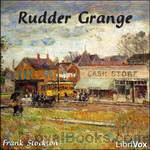 Rudder Grange
Rudder Grange
This book presents a number of short, comedic sketches of a country life in middle America in the late 1800s. The hilarious twists and turns endear our adorable, naive married couple to the reader; and the orphan servant Pomona – dear, odd, funny Pomona! – is the focus of several of the stories. Imagine a honeymoon in a lunatic asylum, and you’ve got Rudder Grange! | |
 Pomona's Travels
Pomona's Travels
Pomona and Jone of Rudder Grange fame travel to England and Scotland. Along the way, Pomona tangles with wild pigs, haymaking, hotels great and small, Pullman cars, comparison-makers, and a Duchess. She makes two matches and – in her usual, unorthodox way – stag hunts and attends a knighting. Pomona is as hilarious as ever, if a bit more rounded off on the edges. | |
By: Frank V. Webster | |
|---|---|
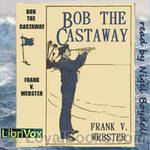 Bob the Castaway
Bob the Castaway
Frank V Webster was a pseudonym controlled by the Stratemeyer Syndicate, the first book packager of books aimed at children. This pseudonym was used on books for boys from the early 1900s through the 1930s.Bob the Castaway follows the antics of young prankster Bob Henderson, his parents futile attempts to get him to mend his ways, and his subsequent nautical adventures. (Introduction by Nigel Boydell) | |
By: Frank Williams (1887-?) | |
|---|---|
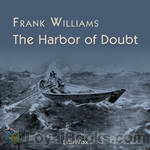 The Harbor of Doubt
The Harbor of Doubt
Young Code Schofield had lost his schooner May Schofield in an Atlantic gale a few months ago, and now the townspeople on the small island of Grande Mignon off the coast of New Brunswick were beginning to talk suspiciously of the events surrounding that loss. Insurance investigators have been summoned to investigate, friends are alienating themselves from Code, and he finds himsef challenged by even those he's known and trusted his whole life. Does Code Schofield have anything to prove, and if so, to whom, and why? | |
By: Franz Kafka (1883-1924) | |
|---|---|
 Metamorphosis (version 3)
Metamorphosis (version 3)
The Metamorphosis (German: Die Verwandlung, also sometimes translated as The Transformation) is a novella by Franz Kafka, first published in 1915. It has been cited as one of the seminal works of fiction of the 20th century and is studied in colleges and universities across the Western world. The story begins with a traveling salesman, Gregor Samsa, waking to find himself transformed (metamorphosed) into a large, monstrous insect-like creature. The cause of Samsa's transformation is never revealed, and Kafka never did give an explanation... | |
By: Franz von Dingelstedt (1814-1881) | |
|---|---|
 John Gutenberg, First Master Printer: His Acts and Most Remarkable Discourses and his Death
John Gutenberg, First Master Printer: His Acts and Most Remarkable Discourses and his Death
This is a brief sketch of the last years of the life of Johannes (John) Gutenberg, the man who invented the movable letter press. We join him in Mayence, where he lives in poverty. We get to know his enemies and his friends, and some information about why he isn't the rich man we'd expect him to be. This book was prepared and completed within two days by the volunteers at Distributed Proofreaders to mark their 15th anniversary with the 50,000th published book at Project Gutenberg. ( Claudia Salto) | |
By: Fred M. White (1859-?) | |
|---|---|
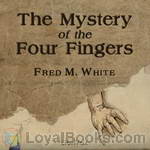 The Mystery of the Four Fingers
The Mystery of the Four Fingers
A fabulously rich gold mine in Mexico is known by the picturesque and mysterious name of The Four Fingers. It originally belonged to an Aztec tribe, and its location is known to one surviving descendant. Surprises, strange and startling, are concealed in every chapter of this completely engrossing detective story. And through it runs the thread of a curious love story. | |
 Corner House
Corner House
A deserted house with a troubled past. A mysterious countess who captivates everyone with her wealth and beauty -- well, almost everyone. An equally mysterious derelict who holds a secret to the countess's past. A fresh crime that threatens to ruin a promising young doctor. A plucky young governess determined to save him. Who will prevail? | |
By: Frederic Stewart Isham (1866-1922) | |
|---|---|
 Nothing But the Truth
Nothing But the Truth
A young man, finding himself unexpectedly impecunious, attempts to improve his fortunes by wagering that he can speak nothing but the absolute truth for three weeks. He soon learns, however, that telling only the unvarnished truth can have surprising consequences. This 1914 novel of love, mystery, and misunderstandings, with amusing characters and plot twists, was adapted as a Broadway play in 1916, followed by six motion pictures: in 1920 and 1929; in 1931 separately in Spanish, French and German; and in 1941 starring Bob Hope and Paulette Goddard. Frederic S. Isham was a writer of short stories, novels and plays. (Lee Smalley) | |
By: Frederick Marryat (1792-1848) | |
|---|---|
 The Children of the New Forest
The Children of the New Forest
The children of Colonel Beverley, a Cavalier officer killed at the Battle of Naseby are believed to have died in the flames when their house, Arnwood, is burned by Roundhead soldiers. However, they escape and are raised by Joseph Armitage, a gamekeeper in his cottage in the New Forest. The story describes how the children adapt from anaristocratic lifestyle to that of simple cottagers. The children are concealed as the grandchildren of Armitage. Eventually after Armitage’s death, Edward Beverley leaves and works as a secretary for the sympathetic Puritan placed in charge of the Royal land in the New Forest... | |
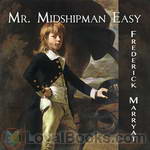 Mr. Midshipman Easy
Mr. Midshipman Easy
One of the first novel-length pieces of nautical fiction, MR. MIDSHIPMAN EASY (1836) is a funny and easygoing account of the adventures of Jack Easy, a son of privilege who joins the Royal Navy. The work begins as a satire on Jack’s attachment to “the rights of man” that may try the listener’s patience. But despair not, for the story soon settles down as the philosophical midshipman begins his many triumphs over bullies, foul weather, and various damned foreigners of murderous intent.Caveat audiens: This novel employs racial/ethnic epithets and religious stereotypes, as well as taking a rather sunny view of supply-side economics... | |
 Jacob Faithful
Jacob Faithful
Rebelling against the career chosen for him by his wealthy family, Frederic Marryat joined the Royal Navy in 1806 at the age of 14. He first served as a midshipman in the 38-gun frigate "HMS Imperieuse" commanded by Lord Cochran, 10th Earl of Dundonald whose real life exploits were used by Marryat in his fiction and which formed the basis for other famous fictional characters like Horatio Hornblower and Jack Aubrey. Having survived more than 50 sea battles and attained the rank of Post Captain, he resigned from the Navy and devoted the rest of his life to writing, drawing a good deal on his distinguished career in the Navy and is now considered the Father of Modern Nautical Fiction... | |
 Snarleyyow
Snarleyyow
This is a quite amusing nautical tale of the British Navy of the around the year 1700. While, as with much early 'humor', it is somewhat heavy-handed, the sympathies of the author are clear and good, and cruelty is often averted by good fortune or background characters. First published under the title 'The Dog Fiend', the primary characters are an evil captain of a cutter and his dog. The dog seems indestructible, as is the poor cabin boy who is the butt of the captain's ill humor, and who often is chewed on by the dog... | |
 Naval Officer, or Scenes in the Life and Adventures of Frank Mildmay
Naval Officer, or Scenes in the Life and Adventures of Frank Mildmay
Marryat was a midshipman under Captain Cochrane and this, his first naval adventure, is considered to be a highly autobiographical telling of his adventures with one of Britain's most famous and daring naval captains. | |
By: Frederick O. Bartlett (1876-1945) | |
|---|---|
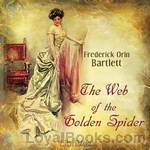 The Web of the Golden Spider
The Web of the Golden Spider
The Web of the Golden Spider is a tale of mystery, intrigue and adventure that begins in the city, progresses to a mutinous open sea voyage, eventually leading to the remotest areas on the slopes of the Andes of South America. Wilson, our hero, finds himself in the midst of a battle between a deposed queen and revolutionists who have banded together in an effort to bring their country together as a republic. Wilson, although torn between helping mercenaries, freedom fighters and revolutionaries, is more concerned with the rescuing of the girl he has fallen in love with, but who has been snatched from him by a mysterious priest... | |
By: Frederik Pohl | |
|---|---|
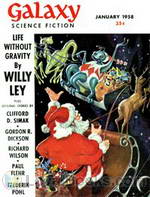 The Knights of Arthur
The Knights of Arthur
Sailors Sam Dunlap and Arthur check in to a New York hotel to await their mate Vern Engdahl when a girl shows up proposing to purchase Arthur. They need guys like Arthur to help run the city, and the fact that he fits in a small suitcase is even better. – The Knights of Arthur was first published in the January 1958 edition of Galaxy Science Fiction magazine. | |
By: Friedrich de La Motte-Fouqué (1777-1843) | |
|---|---|
 Undine
Undine
Undine is a novel by Friedrich de la Motte Fouqué concerning Undine, a water spirit who marries a Knight named Huldebrand in order to gain a soul. It is an early German romance, which has been translated into English and other languages. The novel served as inspiration for two operas in the romantic style by Ernst Theodor Amadeus Hoffmann and Albert Lortzing, respectively, and two ballets: the nineteenth century Ondine and the twentieth century Undine. An edition of the book was illustrated by Arthur Rackham... | |